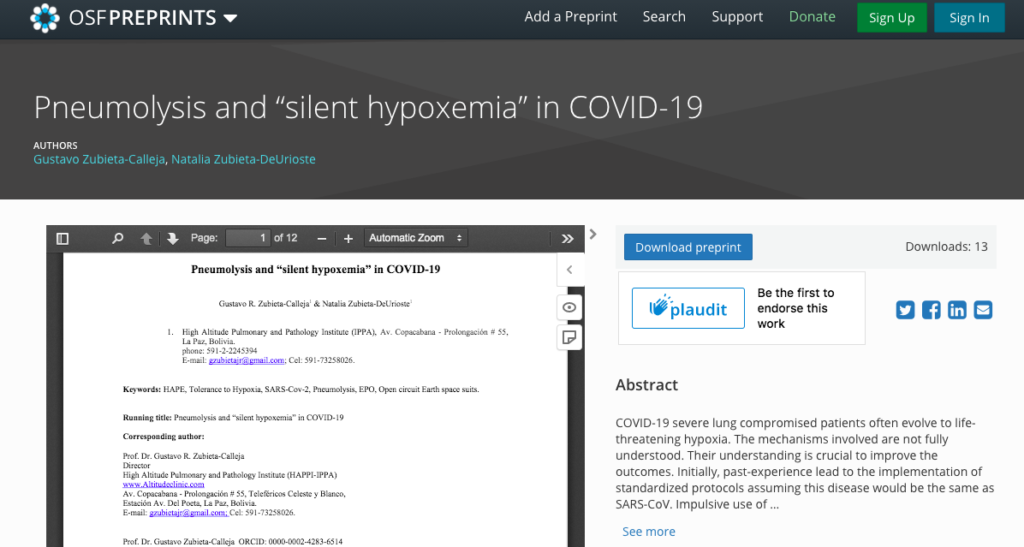As the Cov-2 appeared in Wuhan, China and we first saw people falling dead in the streets, following a severe lung compromise, no one really understood what was happening. See here what happened:

This from the Sun newspaper in the UK
Yes, many doubted, but it was true !! People died in the streets….. First in Wuhan and then all over the world.
The severe lung compromise in the lungs became evident in a lung scan,
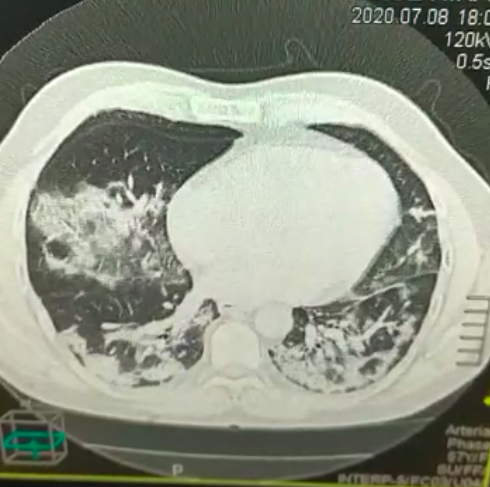
and the fact that it was a Coronavirus, the world phycisians named it SARS-CoV-2, without second thoughts, i.e. Severe Acute Respiratory Syndrome. Hence is was named SARS-Cov-2 Pneumonia. And this carried on for several months throughout most of the year, with everyone rushing for the use of ventilators. Expensive ventilators were short in demand and rich and poor countries invested millions in order to obtain some. But were they on the right track?
Several started building respirators and among them, myself.
The total lockdown reduced the possibility of getting resources so being in Bolivia, I decided to build one, based on available materials. I designed the mechanism from a plastic ball found in a supermarket. I placed two flat square plates articulated with two hinges. A stepping motor was the driving force that moved the top plate up and down, and it was regulated by an arduino UNO, as the brain. I called a friend Rijard Ostermann who develops radars and has a team of collaborators with the idea of developing a small industry of respirators. I enthused him to work on this and we did so for about a couple of weeks. I sent him the video of the first prototype showing the ventilation effect.
But soon I realized that something was wrong. Not working right!
People were dying while on the ventilators and even 88.7% of those in New York top equiped Intensive Care Units, lost their lives. I then realized that ventilators were not of much use. I wrote a paper entitled:

Why was that? Evidently, no one understood the pathology, in other words, no one understood what the virus was doing to the lungs. As everyone knew, the virus attacked the pneumocytes and entered through the ACE-2 receptors. I then realized that the virus was causing what I first termed “Pneumolysis” and after about 2 weeks of thinking about it, I expressed it in public for the first time on June 7-19th 2020 (video available here) during in the International Conference on Corona Viral Genomics to Paolo Pelosi, the prestigious Italian intensivist. During the 2nd World Conference on Advances in COVID-19 organized by myself Prof. Dr. Gustavo Zubieta-Calleja representing our High Altitude Pulmonary and Pathology Institute (HPPAI-IPPA) and and Prof. Malai Gowda representing the Bengaluru Genomics Center in India, with convenors Dr. Pruthvi Chakravarthy and Dr. Natalia Zubieta-DeUrioste from both of our Institutions.

Here is the video presentation of the talk: “Pneumolysis and Silent Hypoxemia a new concept” by Prof. Dr. Gustavo Zubieta-Calleja’s presentation
But, why do we affirm this?
Isn’t the COVID-19 lung disease a Pneumonia?
No, it is a Pneumolysis.
Bit this implies that everyone was treating a disease, all around the world, that they simply did not understand ?
Yes, and many lives could have been saved. But we tried to communicate it to the world, early on. With Natalia my M.D. daughter and immediate collaborator, we wrote a resumed short communication and submitted it to the Lancet on :
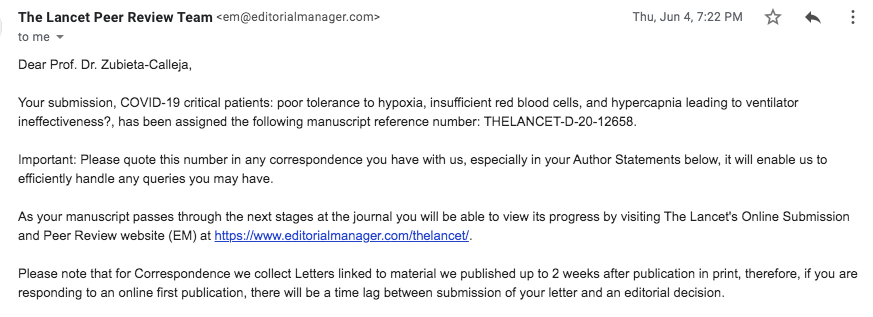

and their response was:

We can understand that they are rejecting 99% of the papers as Prof. Murray Epstein has told me, however, we truly feel that this was a huge mistake. We are talking of saving people’s lives here. And this new concept is fundamental. Obviously, it was simply not understood.
So what should we do next ? Well lets try JAMA, but lets work on some changes and so we submitted:

And this time we included the term pneumolysis in the title. And what was the response?
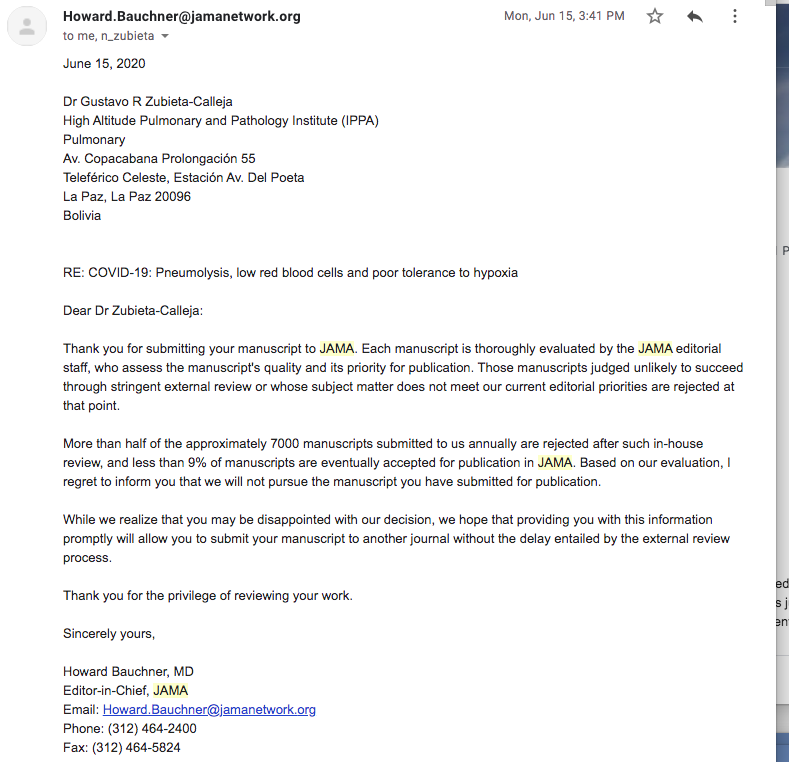
And as we were getting worried that this could not move on we wrote:
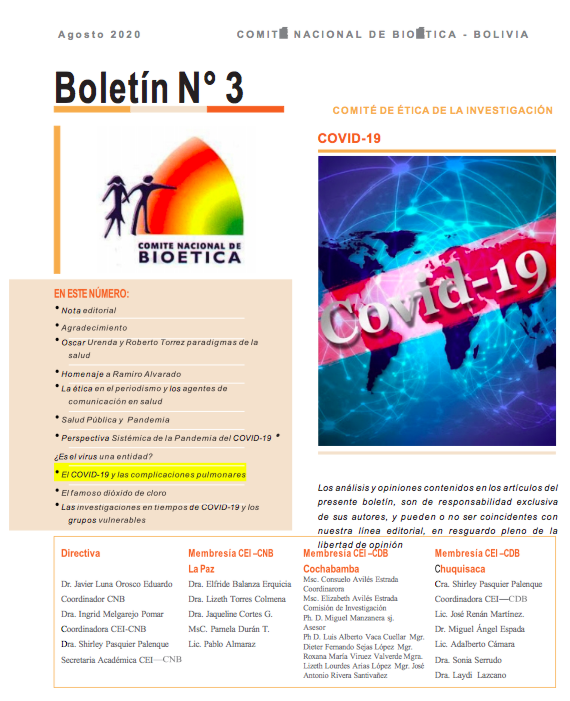
But a Bolivian Newspaper EL Diario also made me an interview:
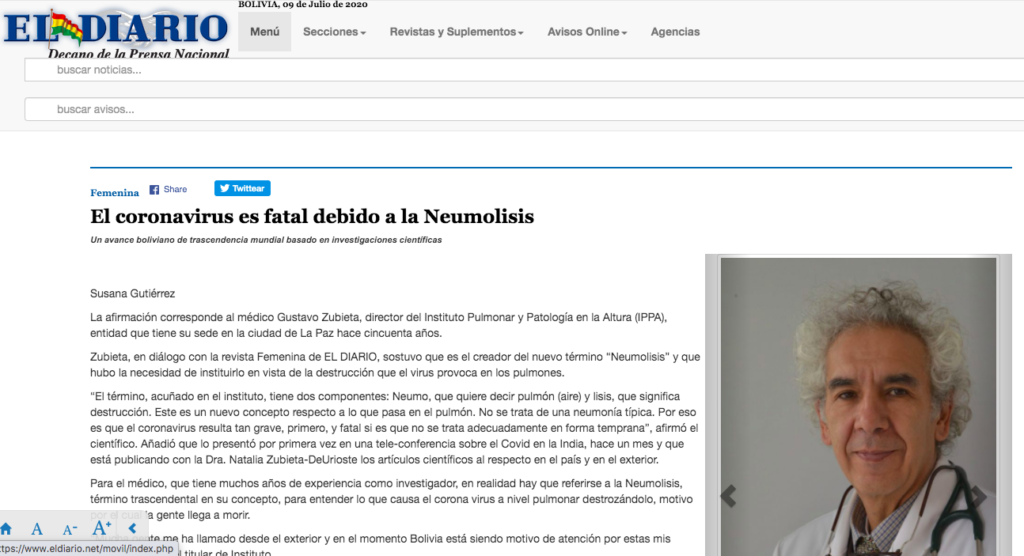
But we needed a good article in a top international journal and it finally came:

However, there is also a pre-print of our next paper that is being peer-reviewed:
